The giant sawgill (Neolentinus ponderosus) is a massive species of mushroom found primarily in the Pacific Northwest. It is enormous and has some unique features that make this mushroom pretty easy to identify once you know the key characteristics. The giant sawgill mushroom is edible, though many disparage it as too tough or unpalatable. However, they’re missing out on a really nice edible species — the key, as with many mushrooms (like chicken of the woods), is to find them when they’re young and more tender.
Giant sawgills have a “twin.” The Trainwrecker mushroom looks almost exactly the same but isn’t usually quite as large as its giant cousin, and it has a ring around the stem, which the giant sawgill doesn’t have.
- Scientific Name: Neolentinus ponderosus
- Common Names: Giant Sawgill, Fringed Sawgill
- Habitat: Dead and decomposing conifer, specifically lodgepole pine and Ponderosa pine
- Edibility: Edible
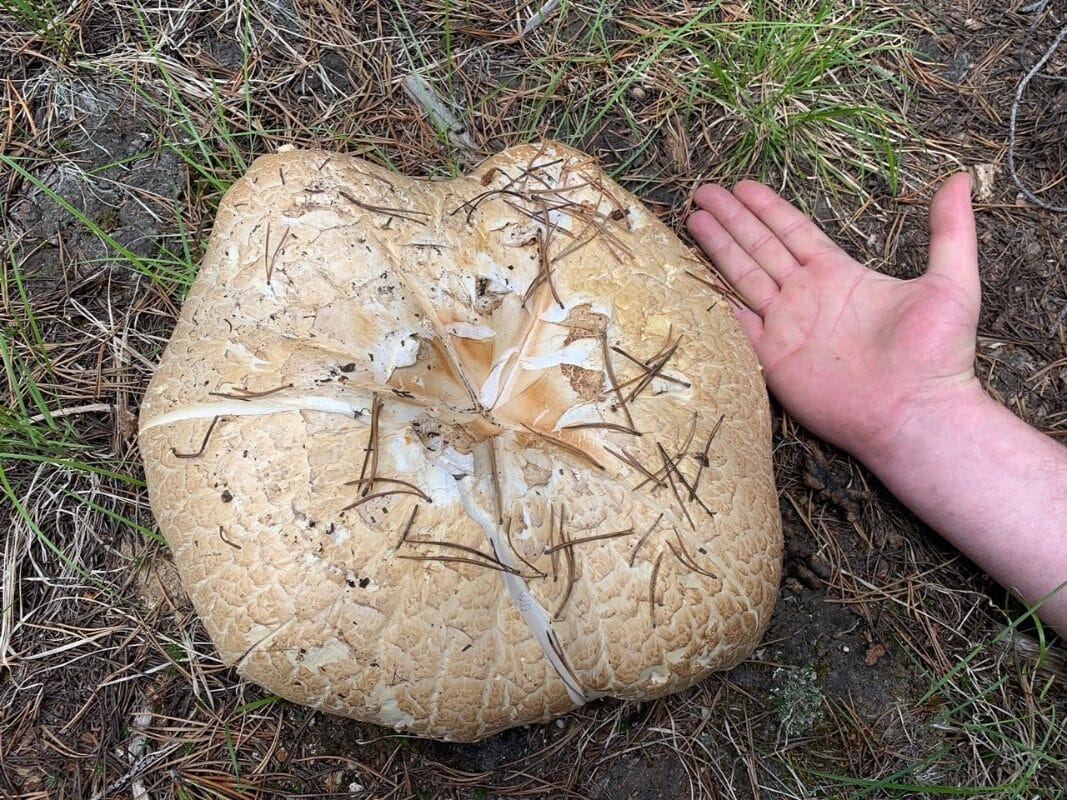
Jump to:
All About The Giant Sawgill
Giant sawgill mushrooms are hard to miss – they grow out in the open on dead or decaying conifer wood and are huge. They frequently grow in dense clusters, too, so there will be 2-5 enormous mushrooms on one log.
The giant sawgill was first described in 1965 by American mycologist Orson K. Miller as a species of Lentinus. However, subsequent research revealed that it is more accurately classified under the genus Neolentinus. The scientific name “ponderosus” is derived from the Latin word for “heavy,” which aptly describes the substantial size of this fungus.
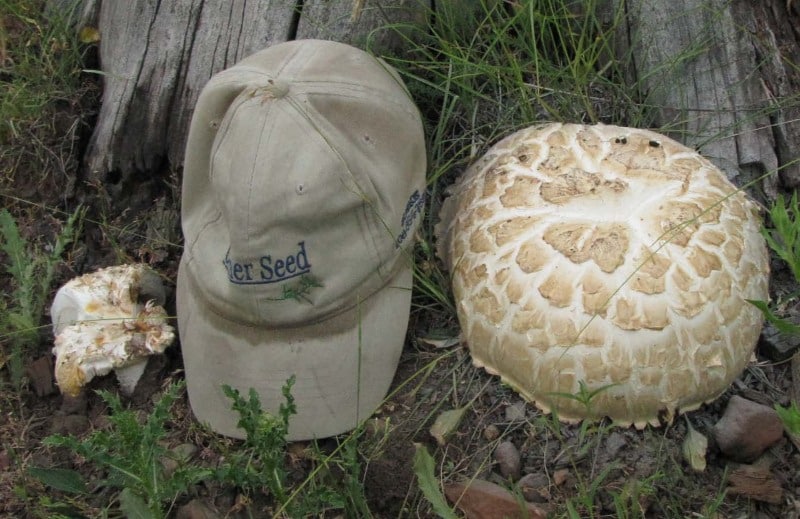
Giant Sawgill Identification Guide
Season
Fruiting typically occurs during the summer months. This mushroom seems to prefer the hot, dry summer climate as opposed to the wetter seasons most other species prefer.
Habitat
The giant sawgill is a saprobic species, meaning it obtains nutrients by decomposing organic matter. It primarily grows on well-decayed, bark-less logs and stumps of ponderosa pine and lodgepole pine, although it can also be found on other conifers. This mushroom is often encountered in open spots with direct sunlight.
Many times it looks like mushroom is growing out of the ground, but that isn’t entirely accurate. They are accessing nutrients from the nearby tree or log even though its not obviously growing from it. Sometimes, the mushroom causes the wood to break down so thoroughly there isn’t much of it to see.
The range of the giant sawgill is primarily the Pacific Northwest region of western North America. These mushrooms tend to stay out for a long time – they don’t decompose very quickly like many other mushrooms. A mature giant saw gill may persist for many weeks.
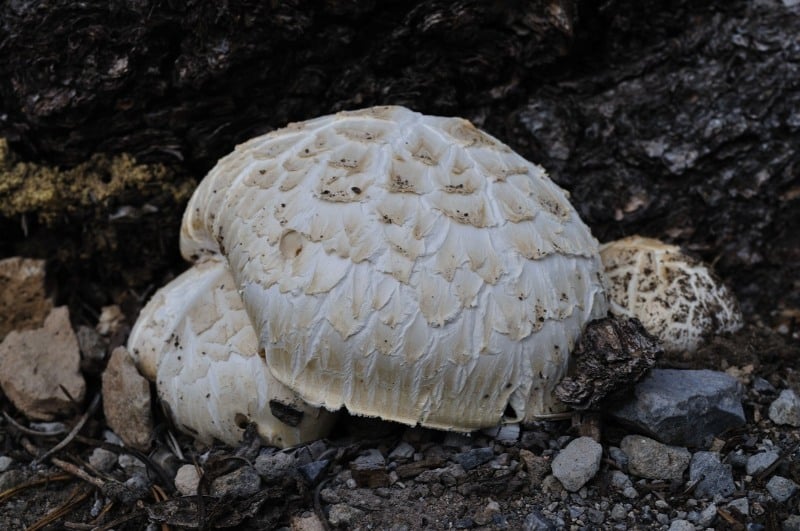
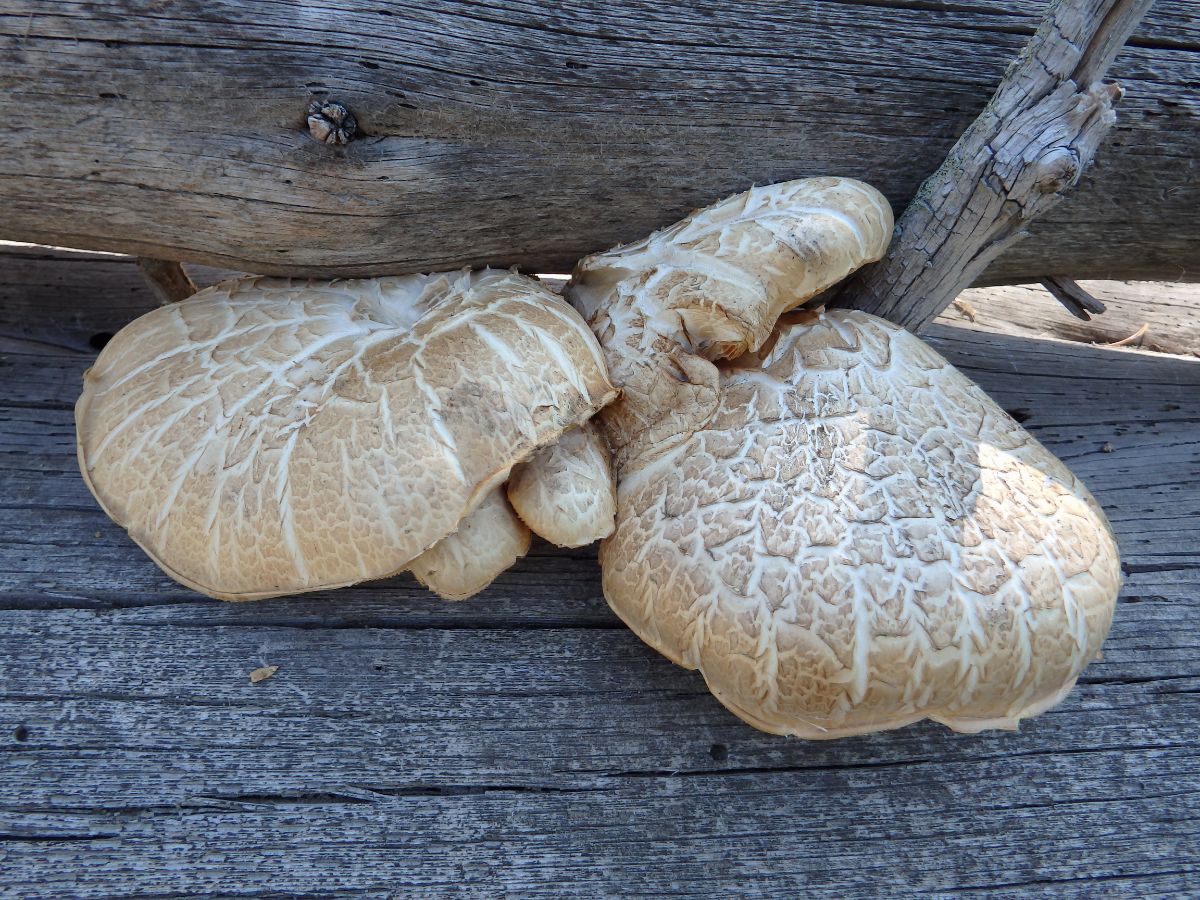
Identification
Cap
The cap of the giant sawgill ranges from 2-13 inches in diameter. It is initially rounded but broadens and flattens out as it matures. It is dry and has a buff to pinkish color. The surface is covered with large, brownish to brown, closely spaced scales. The edge of the cap is rolled under when it is young.
Gills
The gills of the giant sawgill are broadly attached to the stem and are closely spaced. There is a mix of long gills and short gills (ones that don’t reach all the way to the stem). They are white initially but age to a light buff or orange shade. The edges of the gills are serrated, resembling the teeth of a saw. This is how it gets its common name, Sawgill. The serrated gill edges are a key identifier.
Stem
The stem of the giant saw gill grows up to 7 inches long and can be up to 4 inches wide. It is dense, thick, and substantial. The stem is straight or slightly swollen at the base and has a dry texture. The stem is finely scaly or laterally ridged, with scales becoming reddish-brown towards the base. It lacks a ring and can vary in color from whitish to brownish. Often, the stem is covered in thick dirt at the bottom.
Flesh
The flesh of the giant sawgill is white to pinkish-white and exceptionally tough when mature. It doesn’t change color when sliced.
Spore Print
White
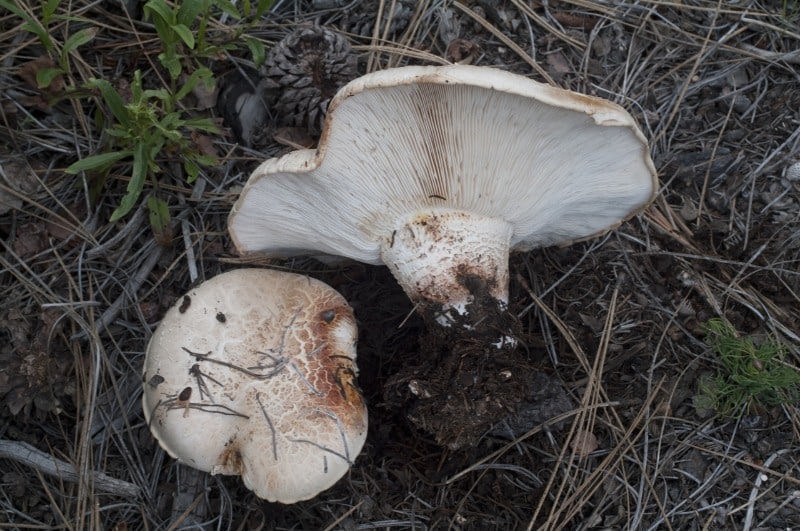
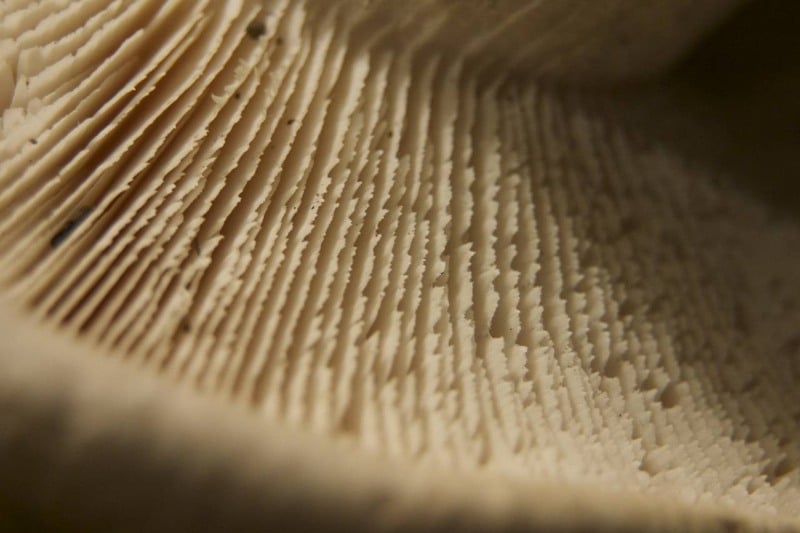
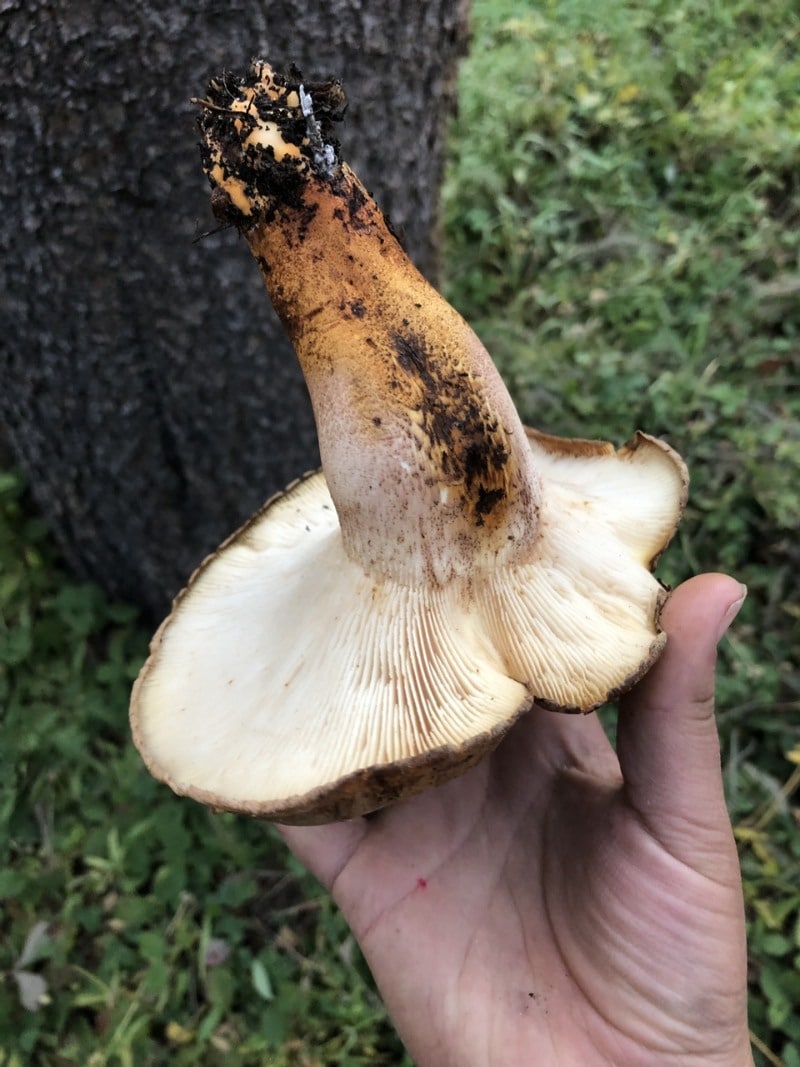
Giant Sawgill Lookalikes
Trainwrecker (Neolentinus lepideus)
The train wrecker is smaller in size, with an erect cap and a ring around the stem. On the West Coast, this species grows primarily from treated lumber; it rarely grows naturally in the woods. This is a great way to differentiate them – if it’s growing in the woods, it’s probably the giant sawgill. If it’s growing from fences, lumber, or in an urban habitat, it’s more likely the trainwrecker.
For everyone east of the Rocky Mountains, this is the species you’ve found since the giant sawgill doesn’t grow where you live.
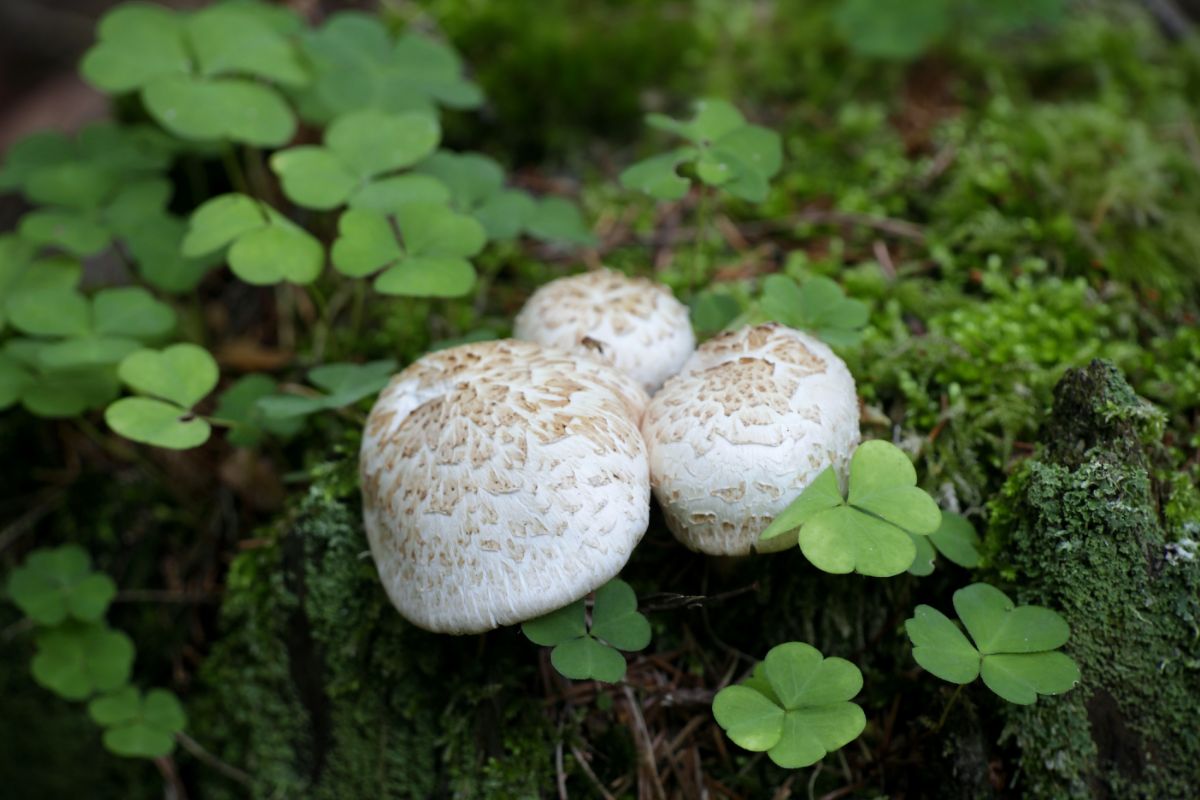
Matsutake (Tricholoma magnivelare)
The matsutake mushroom is also white, with a white cap, stem, and gills. It gets confused with the giant sawgill because of the thick dirt stuck to the bottom of the stem, which is a classic matsutake trait that the sawgill share. There are several easy differences, though. Matsutake do not have brownish scales or any scales on their cap. Also, matsutakes have a very distinct smell which sawgills do not have. Lastly, matsutake mushrooms do not have the sawtooth gills of the giant sawgill.
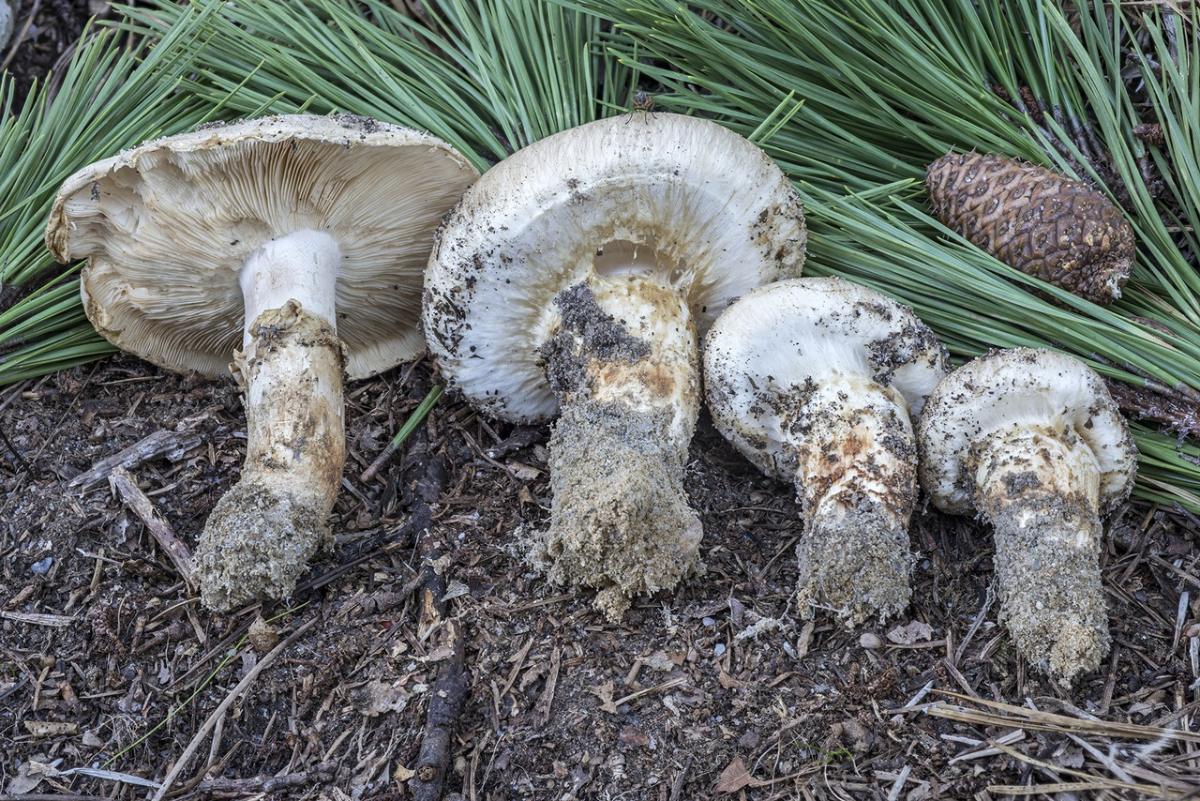
Giant Sawgill Edibility and Preparation
The young giant sawgill mushroom is an excellent edible species. However, their flesh becomes tough and less palatable as the mushrooms mature. Harvest and cook the young specimens for a culinary treat! Even when young, the flesh is dense and a little tough, but when you cook it up, it becomes tender.
Cooked giant sawgill has a texture similar to octopus or squid, with a dense, slightly chewy, but still tender consistency. The flavor is mild or slightly fruity and is very tasty.
Due to its toughness, it is advisable to either slice the mushroom paper-thin or parboil it thoroughly (like 10-20 minutes) before incorporating it into your favorite recipes.
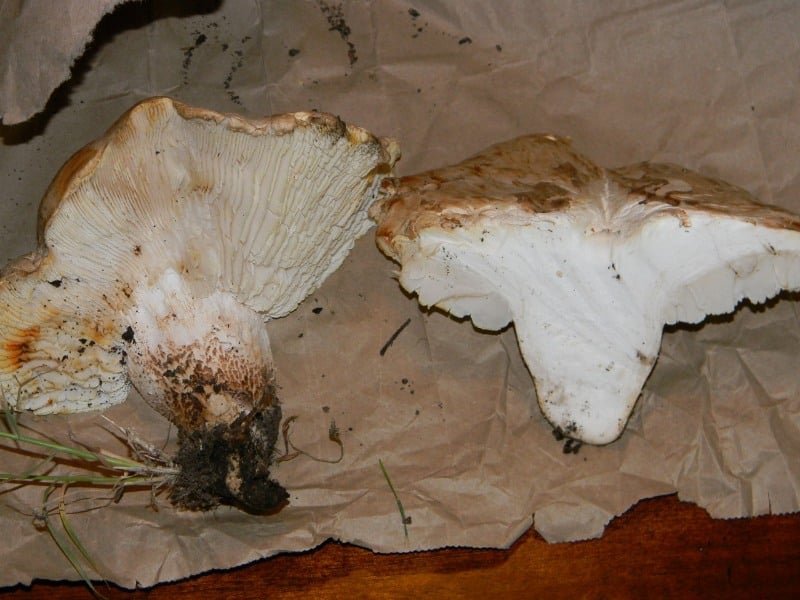
Growing Giant Sawgills
Since this species grows on dead or decaying wood, it is a prime contender for home growing. There are several places online that sell spores, so you can experiment with growing this at home.
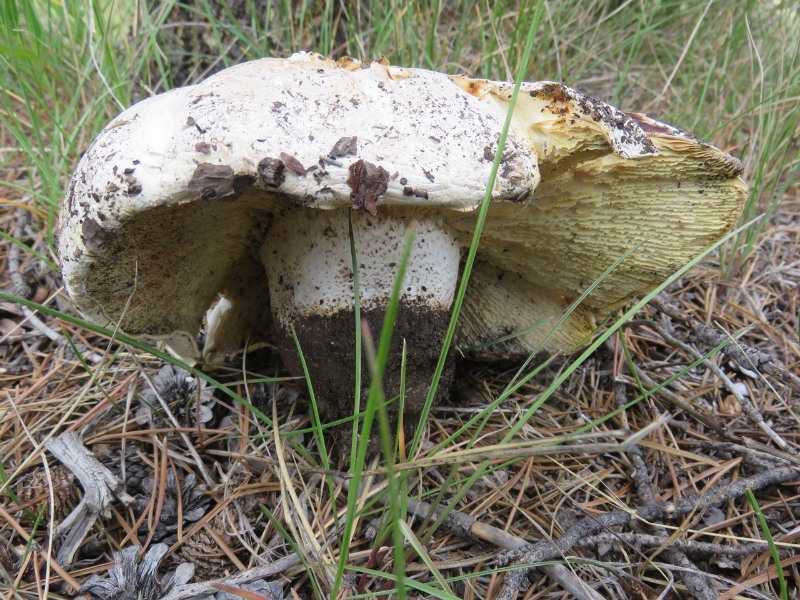
Common Questions About The Giant Sawgill Mushroom
Are giant sawgill mushroom edible?
Yes. They are best foraged when young and still tender. They have a dense, chewy consistency much like calamari.
Where do giant sawgill mushrooms grow?
The giant sawgill is a west coast species and is most prominent in the Pacific Northwest.





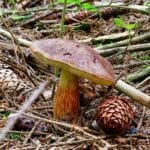
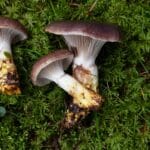
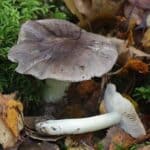

Leave a Reply